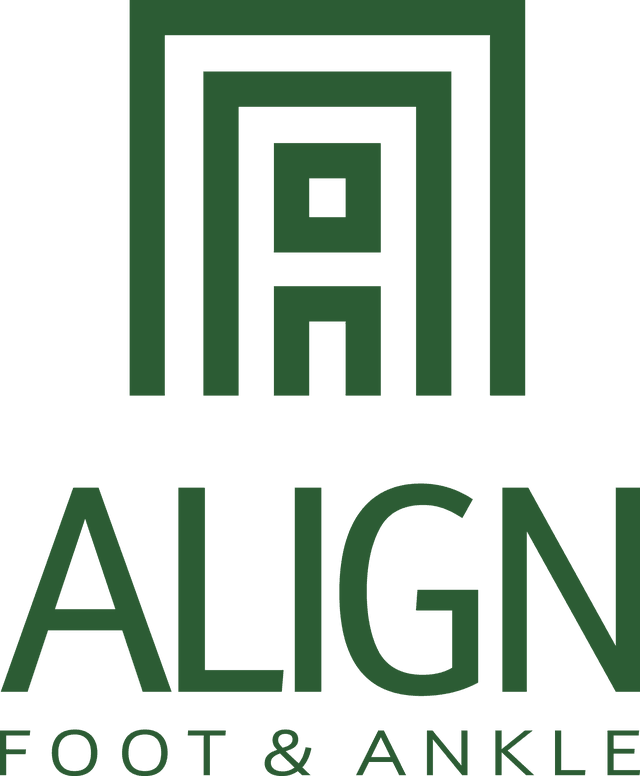Bunions & Hammertoes
(Minimally Invasive Surgery)
Minimally Invasive Surgery at Align Foot & Ankle – Austin, TX

Minimally Invasive Surgery at Align Foot & Ankle – Austin, TX
Foot pain isn’t just frustrating—it can limit how you move, what you wear, and how much of your day you can enjoy. If you’re dealing with bunions, a Tailor’s bunion, or hammertoes that have become painful or hard to manage, you’re not alone. These common foot conditions don’t get better on their own—but you don’t necessarily need traditional surgery to get relief.
At Align Foot & Ankle, Dr. Thuy Ho-Ellsworth offers minimally invasive surgical options performed in our in-office surgical suite. These procedures use small incisions and advanced tools to correct the structure of your foot, allowing for faster healing, minimal scarring, and a return to daily activity without a long recovery.
What Are Bunions, Tailor’s Bunions, and Hammertoes?
Bunions develop when the joint at the base of your big toe shifts out of alignment. The big toe begins drifting inward, while the metatarsal bone angles outward, forming a bump on the side of the foot. Over time, this can lead to joint pain, stiffness, redness, and trouble fitting into shoes.
Tailor’s bunions (or Bunionettes) are similar, but they affect the base of the fifth toe—the outside of the foot. They’re often caused by the same factors as bunions and can be just as uncomfortable, especially in narrow or rigid shoes.
Hammertoes occur when one or more of the smaller toes bend abnormally at the middle joint. This happens because of muscle and tendon imbalance in the foot. Early hammertoes may be flexible, but over time, the joint can become rigid and painful, sometimes developing corns or calluses from shoe pressure.
Common Causes
- Inherited foot structure
- Flat feet or unstable arches
- Tight, narrow, or high-heeled shoes
- Long-term pressure on the forefoot
- Arthritis or prior foot injury
- Muscle or tendon imbalance
Can These Conditions Be Prevented?
While you can’t change your genetics or bone structure, there are things you can do to reduce your risk or slow progression:
Choose supportive shoes with a wide toe box
Use custom orthotics if you have flat feet or joint instability
Avoid prolonged pressure on the ball of the foot
Address early symptoms before deformities worsen
When to Consider Surgery
Not everyone with a bunion or hammertoe needs surgery. Early cases can often be managed with:
Shoe changes
Orthotics
Padding or toe spacers
Activity modifications
Anti-inflammatory treatments
But when pain is daily, the joint becomes stiff or prominent, or walking is affected, surgery is often the most effective and lasting option.
Minimally Invasive Surgery with Dr. Ho-Ellsworth
At Align Foot & Ankle, we use minimally invasive surgical techniques to correct bunions, Tailor’s bunions, and hammertoes with small incisions—often just 2–3mm in size. These procedures are performed right in our office under local anesthesia, so there’s no need for a hospital visit or general anesthesia. Using live imaging, Dr. Ho-Ellsworth gently repositions bones and releases tight soft tissue through tiny openings. No large cuts, no plates or pins sticking out, and no long downtime.
What Are the Benefits of MIS?
Minimal scarring
Reduced swelling and post-op discomfort
Lower risk of infection
Ability to walk the same day in a surgical shoe
Faster return to daily life and work
No general anesthesia or hospital stay required
Recovery & What to Expect
After surgery:
You’ll walk out of the office in a protective shoe
Most patients return to regular shoes in 2–4 weeks
Follow-up visits will monitor your healing and alignment
Most return to work and light activities within days (depending on job type)
Want to see real results?
Click here to view before-and-after photos of our bunion and hammertoe patients. These transformations speak for themselves—and they’re all done using the minimally invasive techniques we offer in-office.
Regenerative Options to Support Healing
To enhance healing and help reduce inflammation, Dr. Ho-Ellsworth offers optional add-ons to your surgical plan:
Regenerative Injection (administered during surgery): Supports soft tissue healing and helps manage post-op pain and swelling
Class IV Laser Therapy (post-op series): Promotes circulation, reduces scar tissue buildup, and supports faster recovery
These options aren’t automatically included, but are recommended for patients who want to optimize their healing and reduce the risk of lingering pain or stiffness.
Frequently Asked Questions
Will this fix my bunion or hammertoe for good?
Surgery addresses the structural problem, so with proper footwear and foot care, results are typically long-lasting.
Will I need general anesthesia?
No. All procedures are done under local anesthesia in our office. Patients remain awake and comfortable.
Will I have stitches or large scars?
MIS uses tiny, poke-hole incisions which minimizes scarring and are often closed with adhesive strips or a single stitch.
Can I walk right after surgery?
Yes. Most patients are able to walk immediately in a post-op shoe.
How do I know if I’m a candidate?
Dr. Ho-Ellsworth will evaluate your foot structure, severity of deformity, and medical history during your consultation.
Schedule Your Consultation
If you’re tired of working around foot pain or changing your life around uncomfortable shoes, you have options. Dr. Ho-Ellsworth specializes in minimally invasive corrections that help patients move better without the long recovery of traditional surgery.

- 1600 W. 38th Street, Suite 408 Austin, Tx 78731 (inside The Jefferson Building)
Useful Links
Hours of Operation
- Monday: 8:00 AM - 5:00 PM
- Tuesday: 8:00 AM - 5:00 PM
- Wednesday: 8:00 AM - 5:00 PM
- Thursday: 8:00 AM - 5:00 PM
- Friday: 8:00 AM - 5:00 PM

